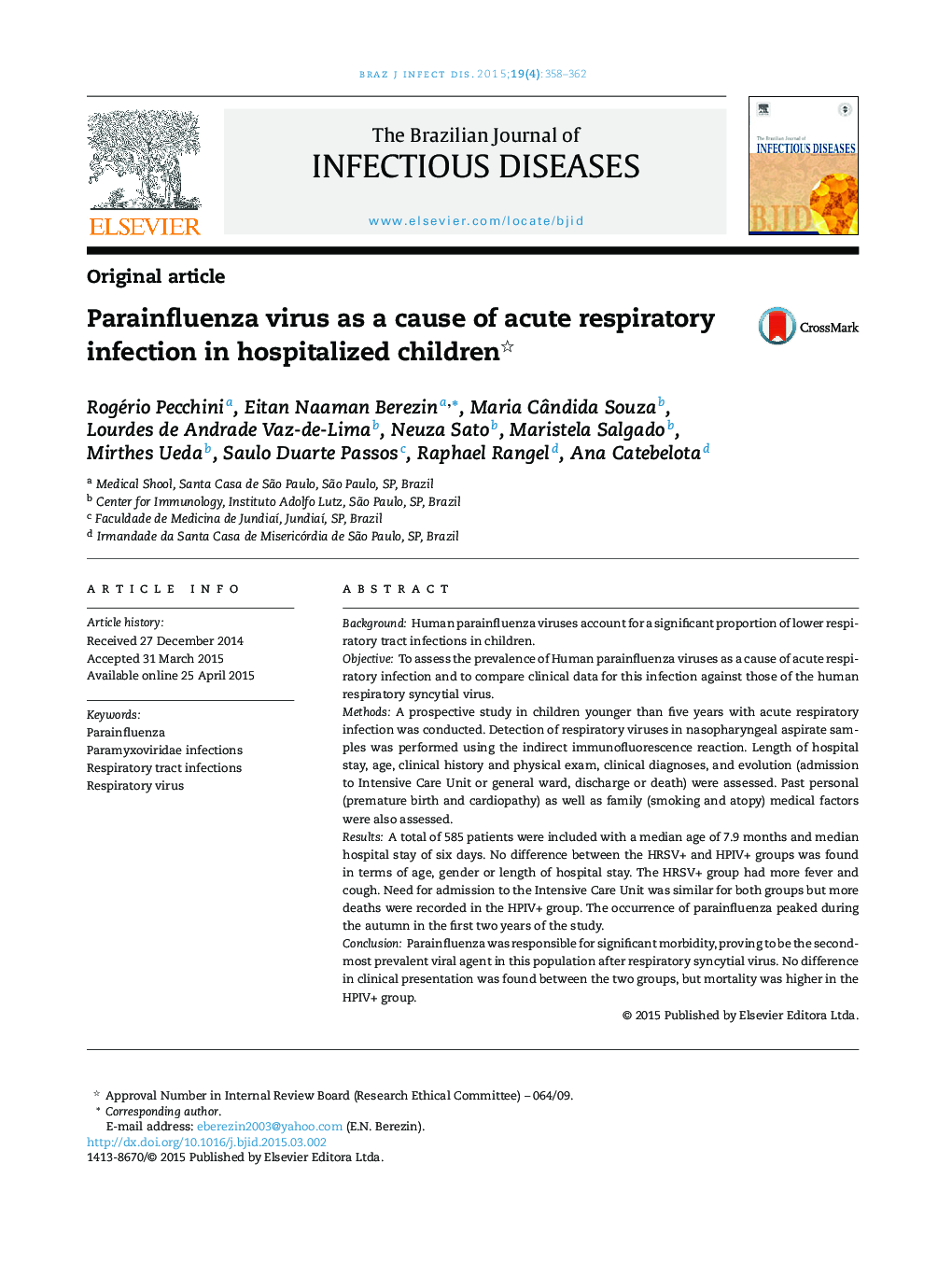| Article ID | Journal | Published Year | Pages | File Type |
|---|---|---|---|---|
| 3343846 | The Brazilian Journal of Infectious Diseases | 2015 | 5 Pages |
BackgroundHuman parainfluenza viruses account for a significant proportion of lower respiratory tract infections in children.ObjectiveTo assess the prevalence of Human parainfluenza viruses as a cause of acute respiratory infection and to compare clinical data for this infection against those of the human respiratory syncytial virus.MethodsA prospective study in children younger than five years with acute respiratory infection was conducted. Detection of respiratory viruses in nasopharyngeal aspirate samples was performed using the indirect immunofluorescence reaction. Length of hospital stay, age, clinical history and physical exam, clinical diagnoses, and evolution (admission to Intensive Care Unit or general ward, discharge or death) were assessed. Past personal (premature birth and cardiopathy) as well as family (smoking and atopy) medical factors were also assessed.ResultsA total of 585 patients were included with a median age of 7.9 months and median hospital stay of six days. No difference between the HRSV+ and HPIV+ groups was found in terms of age, gender or length of hospital stay. The HRSV+ group had more fever and cough. Need for admission to the Intensive Care Unit was similar for both groups but more deaths were recorded in the HPIV+ group. The occurrence of parainfluenza peaked during the autumn in the first two years of the study.ConclusionParainfluenza was responsible for significant morbidity, proving to be the second-most prevalent viral agent in this population after respiratory syncytial virus. No difference in clinical presentation was found between the two groups, but mortality was higher in the HPIV+ group.
